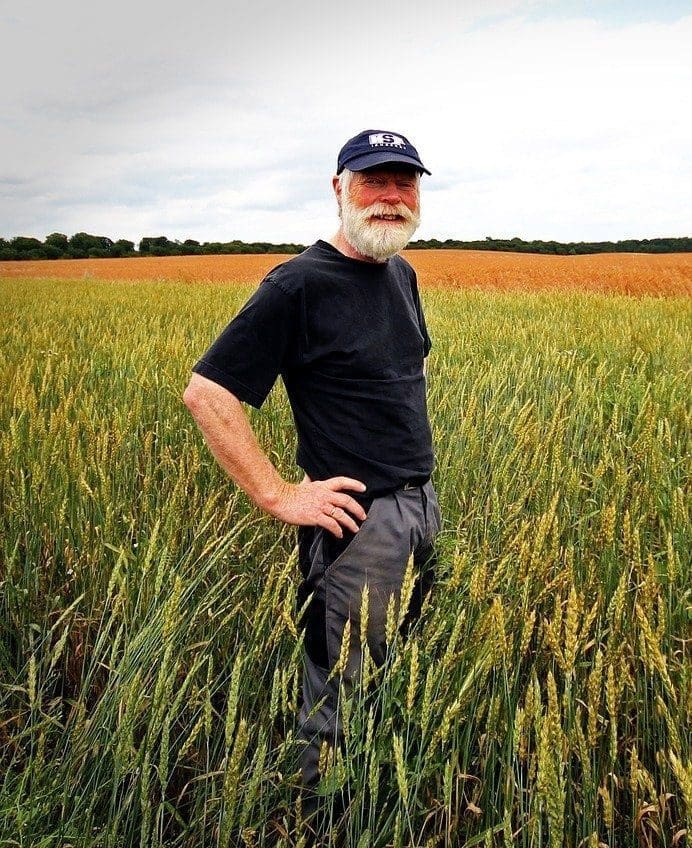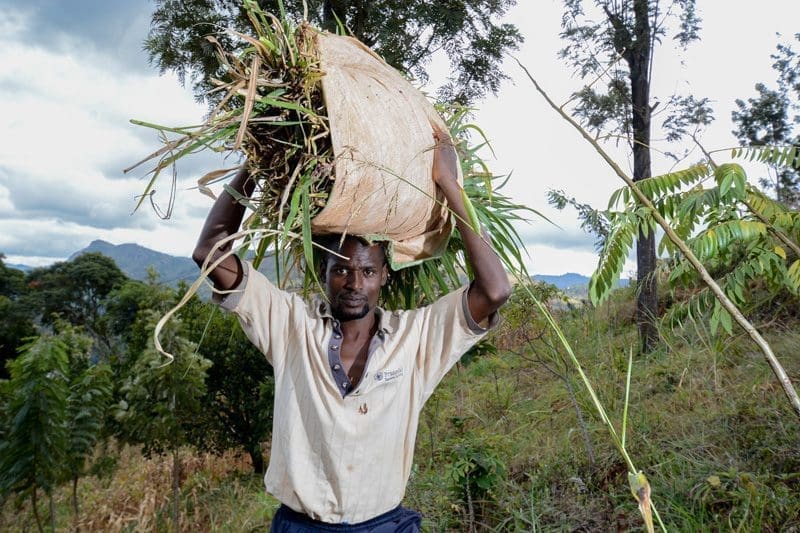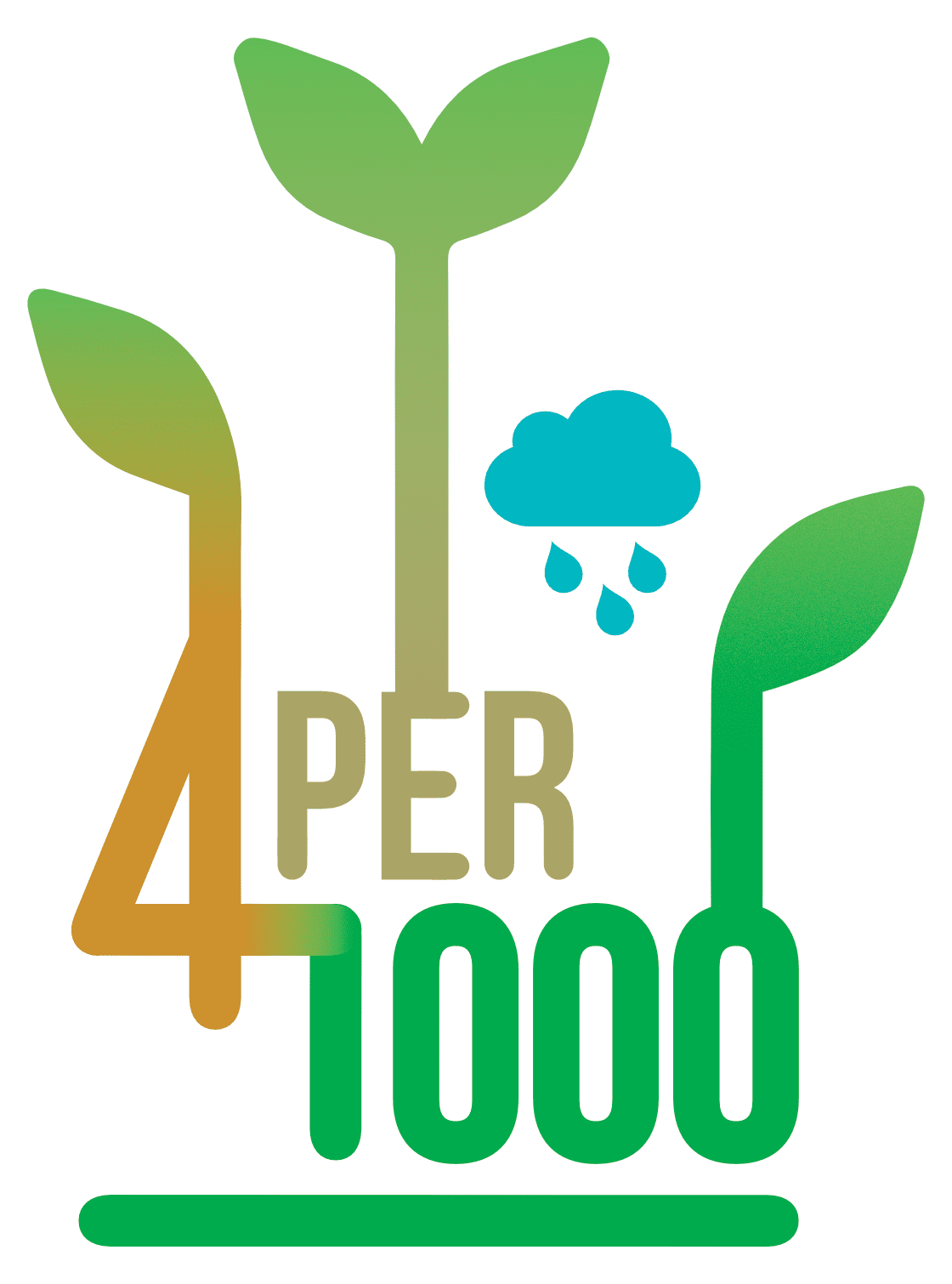We are all concerned !Urgent action is needed to ensure our food security and to limit the effects of climate change.
- 75% of soil is already degraded to varying degrees (degraded or severely degraded) as a result of human activity. If we do not act now, more than 90% of the earth’s surface soils could be degraded by 2050. (source FAO – 2020)
- 40% of African soils are degraded by erosion, salinisation, compaction, acidification, chemical pollution and nutrient depletion, including organic matter decline (source FAO West Africa 2020)
- The equivalent of a football field is eroded every five seconds. Erosion washes away 25 to 40 billion tons of topsoil each year, significantly reducing agricultural yields and the soil’s ability to store and recycle carbon, nutrients and water (source FAO – 2020)
- Cereal production losses due to erosion have been estimated at 7.6 million tons per year. If nothing is done to mitigate erosion, a total reduction of more than 253 million tons of cereals could occur by 2050. This yield loss would be equivalent to removing 1.5 million km2 of land from agricultural production – equivalent to all of India’s arable land (source FAO – 2015)
- 1,500 billion tons of carbon in the organic matter of the world’s soils, more than twice the carbon in atmospheric CO2 (source : IPCC - https://www.ipcc.ch, 2013)
- 1.2 billion tons of carbon per year could be stored in agricultural soils (crops and grasslands) in the top 40 centimetres of soil – an annual storage rate of about 4 per 1000 relative to the soil surface horizon (source: IPCC, 2014)
- About 12% of the world’s land is used for agricultural production, i.e. over 1.5 billion ha(BASF 2010) of arable land and plantations, plus 3.4 billion ha of pasture and rangeland
- The global area under organic cultivation (certified and in-conversion) was estimated at nearly 70 million hectares at the end of 2017, i.e. nearly 5% of the arable agricultural area (UAA). It represented 1.4% of the total agricultural land of the 181 countries surveyed. Non-agricultural organic areas (mainly dedicated to gathering and beekeeping) represented 42.4 million ha in 2017. 47% of these areas were located in Finland, Zambia and Tanzania (Source Agence Bio 2017).
- 12.5% of the world’s Utilised Agricultural Area (UAA) is under Soil Conservation Agriculture (SCA), and 5% is organic, i.e. a maximum of 18% of the UAA under agro-ecology (sources Gcan 2020 and Agence Bio 2017)
- • The issue of soil conservation is a major one, and we are only talking about the stabilisation of an already worrying situation.
Majorissues!
1. Combating land degradation
75% of soils are already degraded to varying degrees due to human activity, and climate change is accelerating this process (Source FAO – 2020). [Source FAO – 2020]. This degradation has adverse effects on food security and family farmers.
Understanding why soils are important for the climate click here.
2. Contribute to the goal of food security
Our ability to feed 9.8 billion people in 2050 in a context of climate change will depend, among other things, on our ability to keep soils alive.
Agricultural production is strongly correlated with soil health, the main indicator of which is the level of organic matter. Productive and stable soils directly support farmers’ resilience to climate change.
3. Adapting agriculture to climate change
Soils that are richer in carbon are better adapted to the impacts of climate change, as they are more resistant to erosion and retain water better, especially during extreme events such as droughts.
The international "4 per 1000" Initiativefor food security and climate
The “4 per 1000” Initiative is intended to complement the necessary efforts to reduce greenhouse gas emissions globally and across all sectors.
The “4 per 1000” Initiative aims to increase soil organic matter content and carbon sequestration through the implementation of agricultural practices adapted to local environmental, social and economic conditions, such as agroecology, agroforestry, conservation agriculture or landscape management.
- The Initiative engages stakeholders in a transition towards highly resilient, productive agriculture, based on appropriate land and soil management, that creates jobs and income and thus leads to sustainable development.
- This Initiative is part of the Global Climate Action Plan (GCAA) adopted by the UNFCCC at COP22 which follows up on the Lima-Paris Action Plan of COP21 and contributes to the goal of achieving a land degradation neutral world.
- Stakeholders will be able to commit to ensuring that as many agricultural soils as possible benefit from practices that maintain or improve their carbon content or preserve carbon-rich soils. Each stakeholder will be able to commit to a target, type(s) of action (from soil carbon stock management to other accompanying measures such as index insurance, payments for ecosystem services, etc.), timeframe and resources.
- The Initiative should send a strong signal on the potential of the agricultural sector to contribute to the long-term goal of carbon neutral economies.

The 4‰ per year growth rate of soil carbon stocks is not a normative target for each country, but aims to illustrate that even a small increase in the carbon stock of agricultural soils (including grasslands and pastures) and forests is a major lever to improve soil fertility and agricultural production and to contribute to the long-term objective of limiting the temperature increase to +2°C, the threshold beyond which the consequences induced by climate change would be of significant magnitude, according to IPCC.
The Initiative is voluntary, it is up to each Member or Partner to define how it contributes to its objectives.
The Originality of the international “4 per 1000” Initiative
The “4 per 1000” Initiative should make it possible to develop concrete actions on the ground that benefit farmers, stockbreeders and foresters, who are the first to be affected by land degradation, and more broadly the entire world population.
A message from Rattan Lal, World Food Prize Laureate 2020
Rattan Lal, Ph.D., Professor Emeritus of Soil Science, Director of the Carbon Management and Storage Center, Ohio State University (USA); former President of the World Soil and Water Conservation Association (1987-1990), International Soil and Tillage Research Organisation (1988-1991), Soil Science Society of America (2006-2008); current President of the International Union of Soil Science (2017-2018); Japan Prize Foundation Laureate 2019, IPCC co-recipient of the Nobel Peace Prize 2007, and World Food Prize Laureate 2020.
Rattan Lal is the author and co-author of over 2,300 articles and over 500 book chapters, and has written 20 books and edited and co-edited 69 books.
He is listed in the Thomson Reuters list of the world’s most influential scientific minds (2014, 2015) and among the most cited scientists (2014, 2015, 2016 and 2017).
How toparticipate?
Join the Initiative as a Partner or as a Member
Each structure can act at its own level, make itself known and share the experience of its project by joining the “4 per 1000” Initiative.
States, representatives of farmers and agricultural sectors, international organisations, scientific and technical research institutes, local authorities, development banks, foundations, private companies and non-governmental organisations are all invited to participate and sign the joint declaration.
To understand the difference between Partner and Member, discover the Initiative’s governance

Concretely, how to get involved?
Making commitments and taking action under the Initiative
The actors in this Initiative are committed to ensuring that, through their actions, as many agricultural soils as possible benefit from practices that maintain or improve their carbon content or preserve carbon-rich soils.
Each actor who makes commitments by signing the Joint Declaration of Intent will have to specify what objectives they are setting themselves, what types of actions they are implementing according to what timeframe and with what resources.
